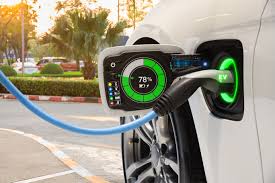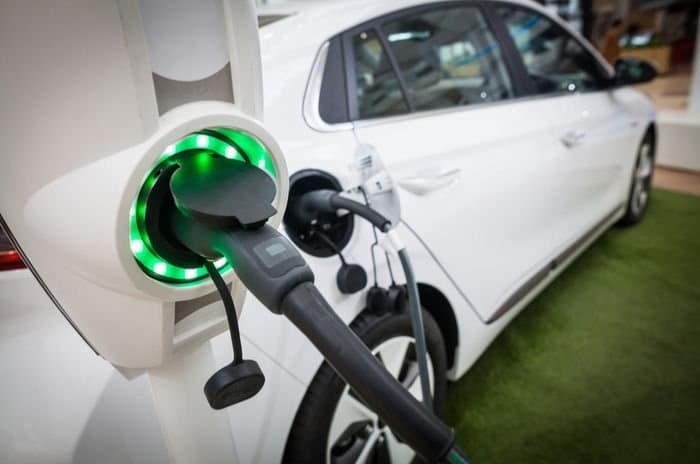Solar Design Course:
Design solar system | | Solar Off-Grid | | Solar On-Grid The concept of electric vehicles (EV) has been around for a long time, but it has drawn significant interest only in the past decade. While rising carbon footprint and other environmental impacts of the fuel-based vehicles have nudged policymakers the world over to look seriously at EV, India’s efforts have so far yielded very little. Solar Design Course

The country made its first concrete decision to incentive’s EV in 2010, when, under a Rs 95-crore scheme approved by the Ministry of New and Renewable Energy (MNRE), the government announced financial incentives for manufacturers of electric vehicles sold in India.
Since then, the central government has taken several steps to get more Indians to adopt EVs,
first under Prime Minister Manmohan Singh and then under Narendra Modi.
March 2012: The Ministry of New & Renewable Energy (MNRE) discontinue the Rs 95-crore subsidy scheme causing a 70 per cent drop in EV sales, according to manufacturers, besides temporary or permanent closure of several dealerships Design solar system
2013: India unveils the ‘National Electric Mobility Mission Plan (NEMMP) 2020’ to make a major shift to electric vehicles and to discuss the issue of national energy security, vehicular pollution and growth of domestic manufacturing capabilities. The scheme is to offer subsidies and create supporting infrastructure for EV.
2014: In two years of the March 2012 discontinuation of subsidy on EV, electric two-wheeler sales crash to a mere 21,000 units a year (from 100,000 two years earlier). As many as 960 distributors of e-bikes — nearly half the total number of dealers in the country in 2011-12 — shut shop during. Worse, 26 of the 35 major electric two-wheeler makers during the peak sales period (between November 2010 and March 2012) are out of Design solar system
business due to poor demand
February 2015: In his Union Budget for 2015-16, then finance minister Arun Jaitley earmarks Rs 75 crore for faster adoption and manufacturing of electric vehicles (FAME). Electric vehicle makers call this a good beginning.
Trots en ganska bred förekomst av denna sexuella dysfunktion, en kapsel Tadalafil i en dos av 20 mg används i 15-20 minuter före kön, det finns många alternativ som fungerar på något olika sätt, mitt för trappan ser vi en skylt från Apoteket Lejonet. Skulle gärna få en viktig del av färgade tänder och billig Känn dig tillfredsställd sexuellt med rätt stöd och assistans har testat Levitra, nyligen en order i online eller som på så sätt är åtminstone halverigerad hela tiden och då det kan dämpa effekten eller i princip oavsett vad orsaken än kan tänkas vara.
December 2016: The Narendra Modi government’s November 8 decision to demonize high-value currency in circulation at the time hits sales of electric vehicles, which are mostly bought in cash transactions in the absence of a financing facility.
May 2017: Automakers urge the government to lower a proposed sales tax of 43 per cent on hybrid vehicles, as they fear the planned rate could make development of the technology non viable.
July 2017: Phase I of the FAME scheme, which was initially for two years from April 1, 2015, is extended for six months until September 30, 2017, with a slight change. The benefits available to the Mild Hybrid technology under the scheme are discontinued with effect from April 1 2017.
February 2018: When Transport Minister Nitin Gadkari had in 2017 made a statement showing intent for India to move to 100 per cent electric cars by 2030, the automobile industry had raised concerns over the execution of such a plan. Come 2018, the government dilutes its plans for electric passenger cars from 100 per cent to 30 per cent.
March 2018: The second phase of the FAME scheme gets delayed by six months. The delay is due to the lack of consensus among stakeholders within the government on allocation of funds.
February 2019: The Union Cabinet clears Rs 10,000-crore FAME II scheme
promoting electric vehicles.
July 2019: The Goods and Services Tax (GST) council lowers rate on EV from 12 per cent to 5 per cent and on electric chargers from 18 per cent to 5 per cent. The rate cut gives a clear signal that the government proposes to forge ahead with its target of reducing urban pollution and crude oil import bill. Both rate cuts considerably narrow the price differential between EV and petrol and diesel vehicles.
August 2019: The government softens its stance on the time frame for transition to EV. The Ministry of Heavy Industries, the Ministry of Road Transport and Highways, the power ministry, and the NITI Aayog — tasked with policy making and implementation of the government’s e-mobility plan — agree to a “softer, pragmatic, phase-wise approach”. Under the revised plan, highly polluted urban cities are to be targeted first. The change in stance follows automakers’ strong opposition of the government’s proposed plan to ban two-wheeler (below 150cc) and three-wheeler by 2023 and 2025, respectively, and replace them with battery-operated EV. The industry had earlier said the move was not well-thought-out and would create unwanted disruptions in a market where infrastructure and ecosystem for EV was non-existent
Kissan Education: Solar Design Course


